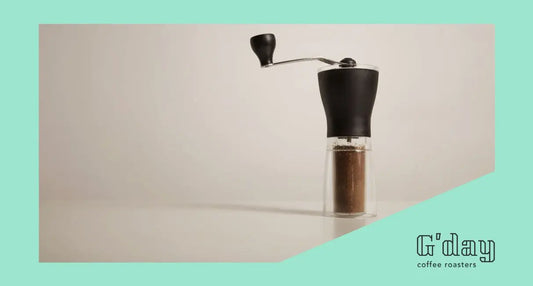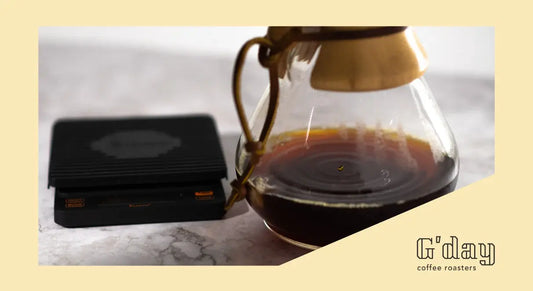How to taste quality coffee?
Specialty coffee is not only a source of caffeine, but also a complex, multi-layered beverage. In order to discover its world of aromas and flavors, it is worth following the tasting principles used by professional cupping experts. They approach each cup of coffee as if it were a complex work of art, a tiny separate world in a cup. What do they pay attention to, what do they base their evaluations on? Let's try to put together a few simple principles so that we can apply the tasting principles at home.
1. Visual assessment
First, the look. The finished coffee can be clear and clean, which often suggests high-quality filtering and roasting. Just like with people, first impressions often say a lot more than expected.
2. Aroma experience
The smell is the first signal of the journey ahead. If you close your eyes and inhale the aroma of coffee a few times, you can smell hints of fruit, flowers, spices or chocolate. The aroma is not only pleasing, but also creates a backdrop for what will soon be felt in the mouth.
3. First sip – with an inhalation of air
Professionals don't just sip coffee, they "suck" it in with air. This is done because the liquid, along with the air, disperses into small droplets and reaches the entire oral cavity evenly. This way, all taste receptors are activated, and the aromas intensify as they travel through the nose. A small trick, but the difference is obvious.
INTERESTING : Try tasting coffee with a stuffy nose… Suddenly it becomes a rather bland and unintriguing drink!
4. Unfolding the taste on the tongue
Let the coffee "travel" around your mouth. Gently swirl the liquid so that it touches the entire surface of your tongue:
· The front part feels sweetness best.
· On the sides - sour cream.
· The back part is bitterness.
This method helps to notice the balance of flavor and distinguish dominant notes.
5. Body
Pay attention to whether the coffee is thick and "rich" like syrup or light and smooth like tea.
6. Aftertaste
The aftertaste is what remains in your mouth after you have drunk your coffee. It is the coffee's "signature": it can be clean, refreshing, or rich, lingering. To best experience it, inhale through your mouth after taking a sip of your coffee.
7. Cooling effect
Quality coffee has one secret – it changes as it cools. In a good cup, the taste not only doesn't spoil, but also opens up new layers: the sweetness of fruit, the freshness of berries, even hints of flowers. So it's worth taking the time to observe how coffee "speaks" at different temperatures.
Practical tips:
· Enjoy coffee without sugar, milk, or other additives.
· It is best to do the tasting during daylight hours, when the senses are most sensitive.
· Taste the coffee several times in small sips. Take a sip of the drink again to assess each point.
· Sip water between different coffees to cleanse your receptors.
· Write down your impressions – aroma, acidity, sweetness, aftertaste. Over time, you will notice how your taste recognition changes and develops.
Coffee tasting is not just a taste experience. It is a way to develop your senses, learn about the origin of the coffee bean, understand its connection to the climate, the farmer's work, and the craftsmanship of the roaster. By tasting correctly, we not only sense more nuances, but also learn to enjoy what we drink more consciously.
Every journey of a cup becomes a story that we discover for ourselves. Have a delicious journey!
You can learn more about coffee scores here: Coffee Score or How Coffee Becomes Quality
To be the first to receive news, I invite you to subscribe: you can register your email address at the bottom of the page.
photo from freepik




